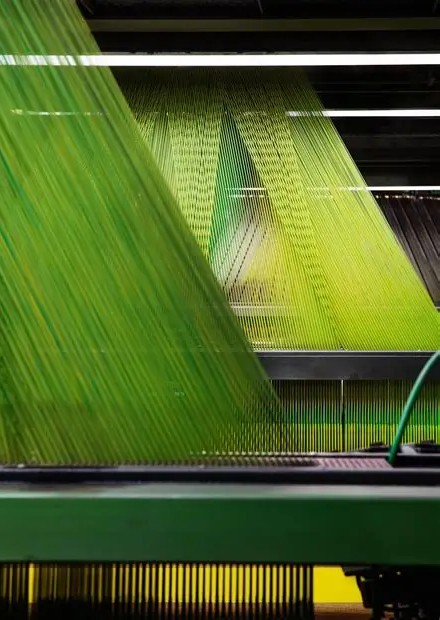What is Dispersant MF?
Dispersant MF, short for Methylnaphthalene Sulfonate Formaldehyde Condensate, is a chemical widely used in the textile industry, especially for dyeing fabrics. It’s a dark brown powder that dissolves easily in water, even in challenging conditions like acidic or alkaline solutions or hard water (water with high mineral content). Chemically, it’s an anionic surfactant, meaning it has a negative charge that helps it interact with dye particles and water to keep dyes evenly spread out during the dyeing process.
Think of Dispersant MF as a helper that prevents dye particles from clumping together. Imagine trying to stir sugar into iced tea—if the sugar sticks together, you get uneven sweetness. Dispersant MF ensures dye particles stay separated and mix uniformly in the water, leading to smooth, consistent color on fabrics like polyester, wool, or nylon.
It’s made by combining naphthalenesulfonic acid (a chemical derived from naphthalene, a compound found in coal tar) with formaldehyde to form a polymer. This structure gives Dispersant MF its excellent ability to stabilize dyes, resist high temperatures, and work in various dyeing conditions. It’s non-flammable, doesn’t create foam, and is safe for many industrial uses, making it a go-to choice for textile manufacturers.
Why is Dispersant MF Important for Dyes?
In textile dyeing, getting vibrant, even colors without spots or patches is critical. Dyes, especially vat dyes (used for cotton and cellulosic fibers) and disperse dyes (used for synthetic fibers like polyester), don’t naturally mix well with water. They can clump, settle at the bottom of the dye bath, or stick unevenly to the fabric, causing problems like:
- Uneven colors (e.g., one part of the fabric is darker than another).
- Dye specks or spots.
- Poor color strength, making the fabric look faded.
- Weak fastness, meaning the color rubs off or fades quickly.
Dispersant MF solves these issues by acting as a dispersing agent, stabilizer, and sometimes a filler in the dyeing process.
Key Uses of Dispersant MF in Dyeing
- Dispersing Dyes for Even Coloring:
- Dispersant MF breaks down dye particles into tiny, uniform sizes (ideally less than 1 micron, or about 1/1000th of a millimeter). This ensures the dye stays suspended in the water like a fine mist, rather than sinking or clumping.
- For example, in dyeing polyester with disperse dyes, Dispersant MF keeps the dye particles evenly spread in the dye bath, even at high temperatures (120–130°C). This leads to consistent color across the entire fabric.
- Typical dosage: 0.5–1.5 grams per liter (g/L) for disperse dyes and 1–3 g/L for vat dyes.
- Grinding Aid for Dye Manufacturing:
- Before dyes are used, they’re often ground into a fine powder to make them easier to dissolve. Dispersant MF is added during this grinding process (often called “sanding”) to make the particles smaller and more uniform.
- It works by sticking to tiny cracks in the dye particles, preventing them from clumping back together. This creates a smoother, more stable dye that’s easier to use in the dyeing machine.
- For example, a dye manufacturer might add Dispersant MF to a vat dye like Vat Blue 4 to ensure it grinds down to a fine, stable powder that won’t settle during dyeing.
- Stabilizing Dye Baths at High Temperatures:
- Many modern dyeing processes, especially for synthetic fibers like polyester, happen at high temperatures to help the dye penetrate the fabric. Dispersant MF is heat-stable, meaning it doesn’t break down even at 120–130°C, keeping the dye evenly dispersed throughout the process.
- This is crucial for large-scale dyeing, where hundreds of meters of fabric are dyed at once. Without a dispersant, the dye could settle, leaving some areas of the fabric under-dyed.
- Improving Color Quality and Fastness:
- Dispersant MF enhances the color strength (how vivid the color appears) and levelness (how uniform the color is across the fabric). It does this by ensuring every part of the fabric gets equal exposure to the dye.
- It also improves rubbing fastness, meaning the dye is less likely to rub off when you touch or wash the fabric.
- For example, a red polyester shirt dyed with Dispersant MF will stay bright and resist fading after multiple washes.
- Specialized Dyeing Applications:
- Azoic Dyes: These are used for bright colors on cotton. Dispersant MF is added to the naphthol bath (2–5 g/L) and the developing bath (0.5–2 g/L) to improve color uniformity and prevent dye from rubbing off.
- Pad Dyeing: In this method, fabric is soaked in dye and then squeezed through rollers. Dispersant MF keeps the dye evenly distributed in the padding solution, ensuring consistent color.
- Leuco Acid Dyeing: For vat dyes, Dispersant MF stabilizes the reduced (leuco) form of the dye, making it easier to apply to cotton or other fibers.
- Compatibility with Other Chemicals:
- Dispersant MF works well with other anionic or non-ionic dispersants, like Dispersant NNO (Naphthalene Sulfonate Formaldehyde Condensate), allowing manufacturers to blend them for specific needs.
- However, it’s not compatible with cationic dyes or surfactants (those with a positive charge), as they can react and cause the dye to clump or precipitate.
Advantages of Dispersant MF
Here’s why Dispersant MF is a favorite in the textile industry:
- Better Dispersing Power: Compared to other dispersants like Dispersant N, MF does a better job of breaking down and stabilizing dye particles, leading to smoother, more vibrant results.
- High Heat Resistance: It stays effective even in the hottest dyeing conditions, which is critical for synthetic fibers like polyester.
- Versatility: It works with a wide range of dyes (vat, disperse, reactive) and fibers (polyester, wool, nylon), making it a flexible choice for textile mills.
- Defect Prevention: By keeping dyes evenly dispersed, it reduces common dyeing problems like color spots, uneven shades, or weak color strength.
- Eco-Friendly: Many formulations of Dispersant MF are non-toxic and biodegradable, making them safer for workers and the environment compared to older chemicals.
- Cost-Effective: A small amount (e.g., 0.5–3 g/L) can make a big difference, so it’s economical for large-scale dyeing operations.
How Does Dispersant MF Compare to Other Dispersants?
Let’s compare Dispersant MF to Dispersant NNO, another common dispersant, to give you a clearer picture:
- Dispersing Power: Dispersant MF is generally better at grinding dyes into finer particles and keeping them stable, especially for disperse dyes. For example, in silicone-based waterless dyeing systems (an eco-friendly dyeing method), Dispersant MF at a 1.2% dosage increased dye exhaustion (how much dye the fabric absorbs) to 94.18% for Disperse Red 177, while NNO only reached 82.61%.
- Solubility: MF can improve the solubility of some dyes, while NNO may reduce it in certain conditions, making MF a better choice for tricky dyes.
- Leveling: Both MF and NNO are good at ensuring even dyeing (with similar leveling performance, measured by CV values around 3.81–3.83), but MF’s superior thermal stability gives it an edge in high-temperature processes.
- Applications: MF is more versatile and widely used in vat, disperse, and azoic dyeing, while NNO is sometimes preferred for specific reactive dyes or lower-temperature processes.
Other Uses of Dispersant MF
While Dispersant MF is a star in the dyeing world, it’s also used in other industries because of its dispersing and stabilizing properties:
- Concrete Industry: As a water-reducing agent, it helps make concrete stronger and easier to pour by reducing the amount of water needed.
- Rubber Industry: It stabilizes latex (liquid rubber), preventing it from clumping during production.
- Leather Industry: Acts as an auxiliary tanning agent to improve the penetration of tanning chemicals into leather.
- Pesticides and Ceramics: Helps disperse particles in pesticide formulations and ceramic slurries.
- Papermaking and Water Treatment: Used to stabilize suspensions or treat water by dispersing impurities.
Practical Example: Dispersant MF in Action
Imagine a textile factory dyeing 1,000 meters of polyester fabric a bright navy blue using a disperse dye. The dye bath is heated to 130°C, and without a dispersant, the dye particles might clump, leaving some areas of the fabric patchy or faded. By adding 1 g/L of Dispersant MF, the factory ensures:
- The dye particles stay tiny and evenly spread in the water.
- The fabric absorbs the dye uniformly, resulting in a deep, consistent navy color.
- The color stays vibrant after washing or rubbing, thanks to improved fastness.
- The process is efficient, with minimal dye waste, saving money and reducing environmental impact.
Things to Keep in Mind
- Dosage Matters: Too little Dispersant MF might not fully disperse the dye, while too much could waste resources or affect dyeing quality. Always follow manufacturer guidelines (e.g., 0.5–3 g/L depending on the dye type).
- Compatibility: Check that Dispersant MF is compatible with your dyes and other chemicals. It doesn’t work well with cationic dyes, so avoid mixing them.
- Storage: Store the powder in a cool, dry place to maintain its effectiveness. It’s stable but can clump if exposed to moisture.
- Supplier Specs: Different brands of Dispersant MF may have slightly different formulations. Always check with your supplier for exact properties, like pH or solubility.
Where to Learn More or Buy Dispersant MF
If you’re looking to purchase Dispersant MF or need specific details (like pricing or availability), you can:
- Contact chemical supplier like GREEN AGROCHEM.
- Check with textile chemical manufacturers for product data sheets or samples.
Final Thoughts
Dispersant MF is like the unsung hero of textile dyeing. It quietly ensures that fabrics come out with bright, even colors, free of spots or defects, while making the dyeing process smoother and more efficient. Whether you’re dyeing polyester dresses, cotton t-shirts, or wool sweaters, Dispersant MF helps deliver professional results. Its versatility, heat resistance, and eco-friendly properties make it a staple in textile mills worldwide, and its uses in other industries like concrete and leather only add to its value.

